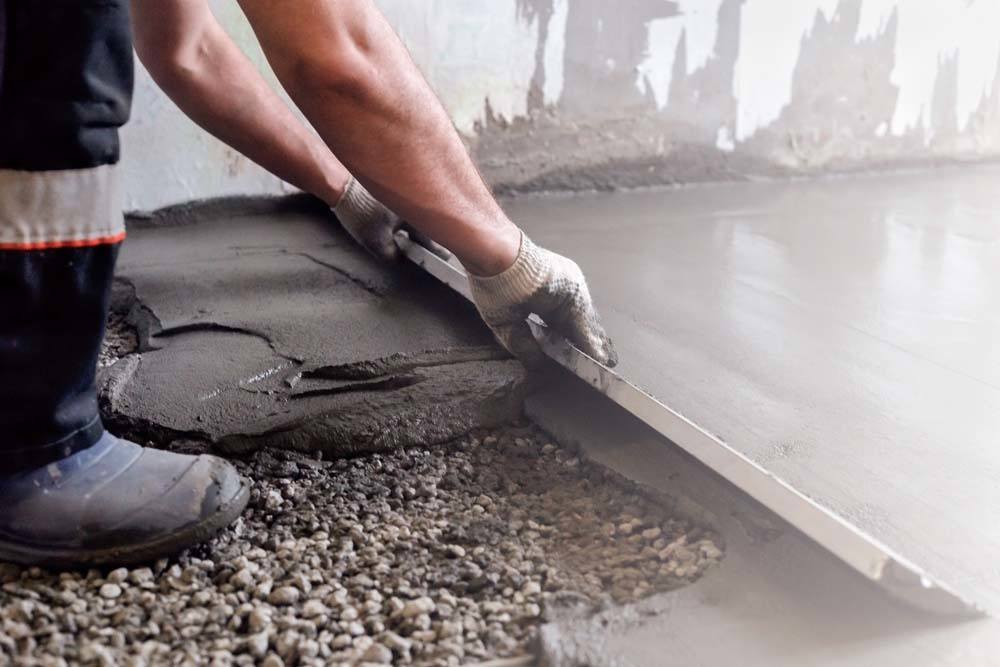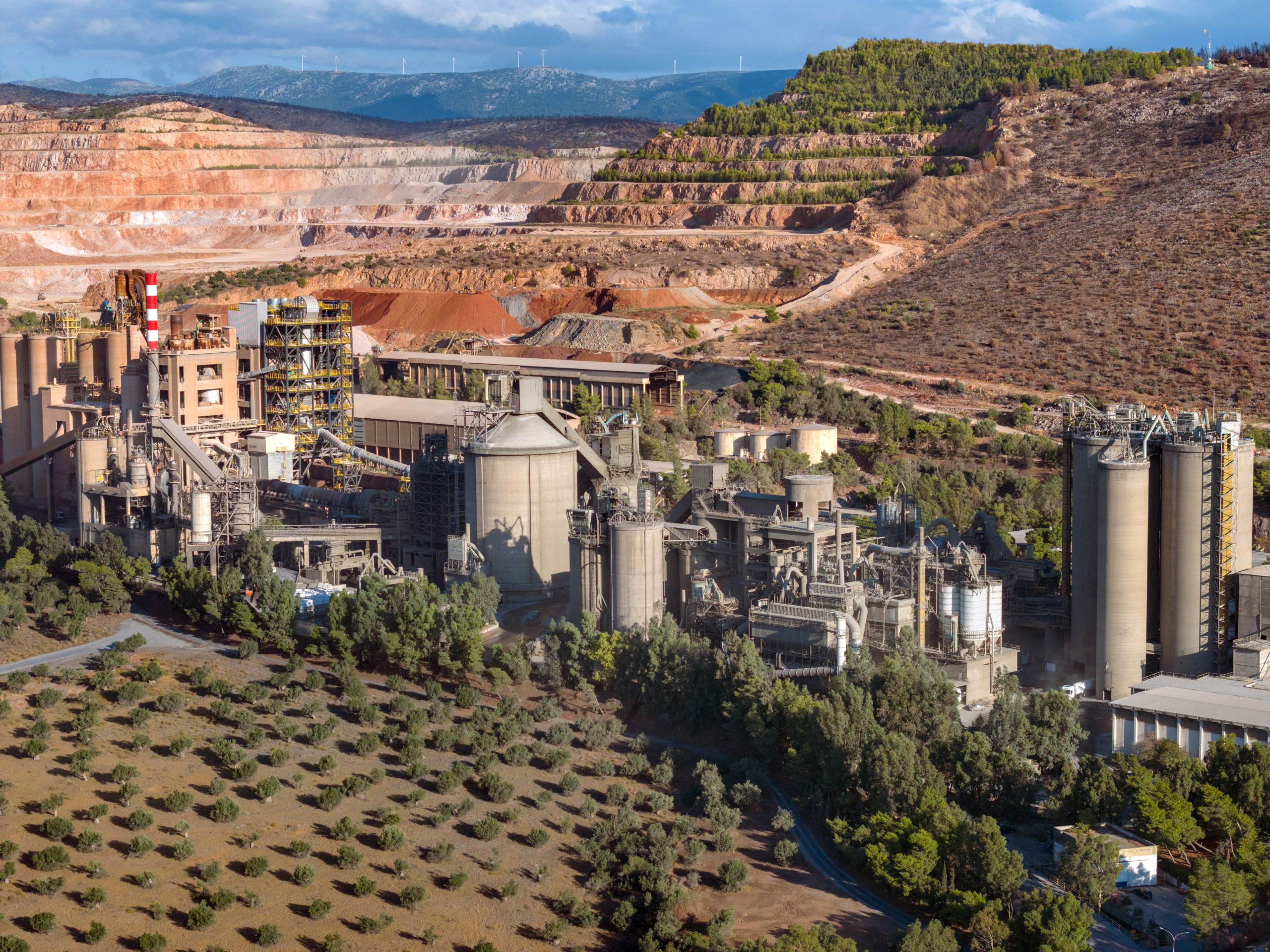In the race to promote sustainability and decarbonize the built environment globally, legacy and startup material suppliers, manufacturers, and adjacent technology companies are working to provide green alternatives to traditional building materials and supplies. The construction industry, long criticized for its substantial carbon footprint, is now witnessing a surge in such efforts to reduce its environmental impact.
Central to this movement are breakthroughs in concrete and cement technology, where considerable progress is being made to significantly lower emissions and enhance the sustainability of these ubiquitous building materials. From novel carbon capture techniques to the development of low-carbon cement alternatives, the integration of recycled materials and bio-based additives, and even the use of IoT sensors to better understand concrete performance, both household industry giants and up-and-coming startups are setting new benchmarks for a greener future in construction.
The lists below highlight a few noteworthy contributions to the concrete and cement industries globally that we're tracking.
Pioneering Innovation
how Global Leaders are Prioritizing Innovation to Drive the Industry Forward
1. Cementos Pacasmayo SAA (CPSAA) is a Peruvian material supplier and member of BuiltWorlds that specializes in the production and commercialization of cement, concrete, and related construction materials. In addition to general sustainability initiatives, CPSAA has ‘The Quarry,” which is the Innovation and Digital Transformation laboratory of Cementos Pacasmayo and serves as a hub for driving innovation, digital transformation, and sustainable change within the company and industry.
2. Cemex, a global industry leader in cement, aggregates, ready-mix concrete, and urbanization solutions, headquartered in Monterrey, Mexico, employs several strategies to decarbonize the building and infrastructure sectors through internal R&D, public commitments, and partnerships.
Vertua, Cemex’s sustainable portfolio of products and solutions, aims to help build a greener, better future that reduces carbon emissions and other environmental impacts within the construction industry. Watch the video below for more information on the Virtua family of products.
3. CRH, an Irish building materials provider with operations across Europe and North America, is doubling down on the drive to build a greener future through its public commitments. The Science Based Target initiative (SBTi) has validated CRH's target for both their cement and non-cement businesses for Scope 1 and 2, as well as Scope 3 for purchased clinker and cement, to be in line with a 1.5°C trajectory.
Their carbon reduction program includes:
- Adding more fly ash to the blended mix, decreasing the amount of cement in the concrete
- Continuing to brand and blend their mixes, which lowers production rates and uses less carbon dioxide
- Using alternative fuels in cement plants to decrease cement production costs, preserve fossil fuels, reduce waste, and decrease the global greenhouse effect
- Increasing the number of National Ready Mixed Concrete Association (NRMCA) Green-Star-certified plants
4. Another BuiltWorlds member, J.M. Huber offers high-brightness HuberCrete calcium carbonate products, through Huber Engineered Materials, that are designed to give your concrete better workability, green strength, appearance, and smoothness—all while improving your project’s sustainability by reducing its CO2 footprint.

5. Much like the other organizations mentioned, Ozinga developed a product line of ready-mix concrete, recycled aggregates, and performance cementitious products to reduce concrete's carbon impact on construction and infrastructure. CarbonSense products and solutions have been specially designed and tested to help you reduce carbon emissions and reach net-zero targets—all of Ozinga's concrete produced in their service area is developed, tested, and validated in their CCRL/ASTM-certified research & development lab using ConcreteAI.
8. TITAN Cement Group, another global provider with positions in the USA, Greece, the Balkans, and the Eastern Mediterranean, has also validated its emission reduction targets through the SBTi.
In addition to groundbreaking Carbon Capture technology, TITAN is closely following and piloting hydrogen use in cement clinker manufacturing. Initial results showed that significant reductions in direct CO₂ emissions are possible with hydrogen, especially when produced through renewable means (“green hydrogen”).

Contributing to BuiltWorlds
We understand this is not an exhaustive list of companies and technologies relative to concrete and cement being implemented in the AEC industry to combat our carbon footprint.
To ensure your organization is considered for future content, please complete the form to the right. If you have any comments or questions, please contact research@builtworlds.com.
Disruptive Technologies Gaining Traction
A Snapshot of Startups pushing legacy solutions to maintain pace
Outside of the more obvious drivers listed above, the startup ecosystem is equally equipped to influence the industry's transition to more green materials and processes.
In recent news, Berlin-based alcemy raised $10M to advance cement decarbonization. In fact, alcemy has already landed TITAN America, a subsidiary of the Titan Group, as a customer.
Other companies on our radar include:
1. CarbiCrete, a Montreal-based carbon removal technology company, is developing innovative, low-cost building solutions that contribute to reducing greenhouse gas emissions. CarbiCrete has patented technology enabling the production of cement-free, carbon-negative concrete made with industrial by-products and captured carbon dioxide.
2. ConcR, a Danish startup that recently demoed at BuiltWorlds 2024 Paris Summit, is creating an IoT solution to generate and mobilize quality data across the life cycle of cementitious building materials. By leveraging their innovative sensor technology and advanced data analytics, the AEC industry can mitigate the environmental impact of concrete production and contribute to global climate change mitigation efforts.
3. Sensytec is another built-world startup developing sensors for cement. Sensytec demoed at BuiltWorlds’ 2023 Buildings Conference and is aiming to unlock real-time concrete performance data via temperature and electrical resistivity for general contractors and in the precast and advanced materials industries.






Discussion
Be the first to leave a comment.
You must be a member of the BuiltWorlds community to join the discussion.